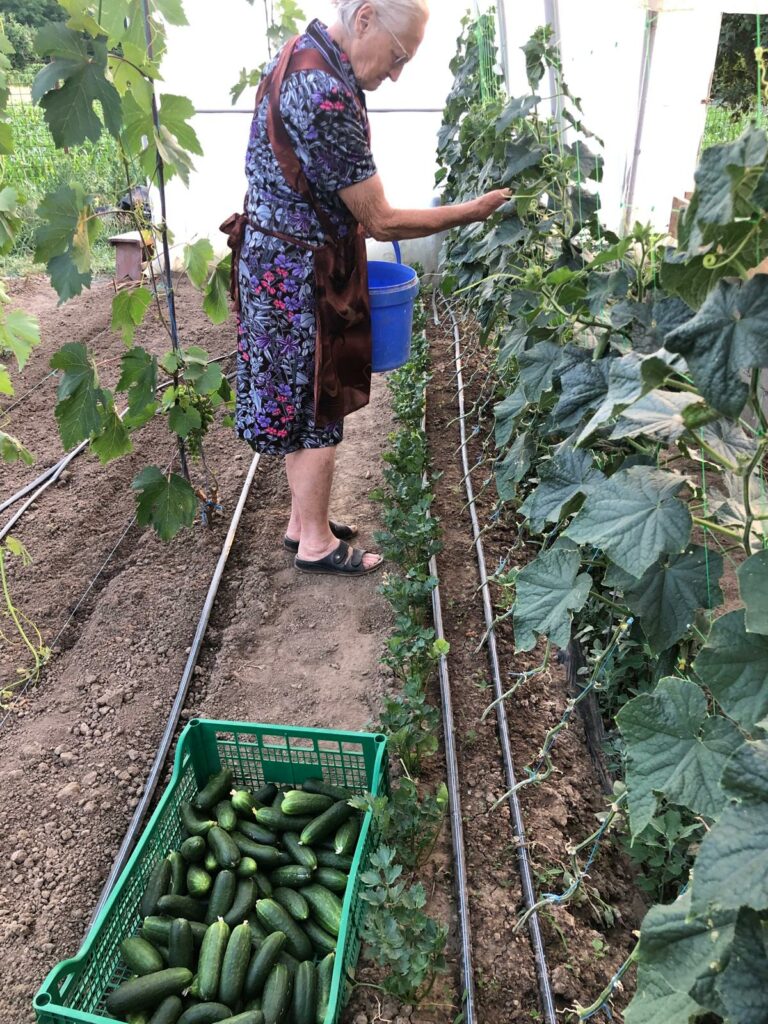Growing Together: How a social farm in Romania is cultivating hope and connection
Social farming harnesses the power of agriculture to deliver care and support for people in vulnerable situations. It involves using agricultural resources such as plants, animals, and land to provide health, social and educational services to vulnerable groups. This includes individuals with mental or physical health needs, people facing social exclusion or long-term unemployment, and those recovering from addiction.
Activities on social farms can include animal care, vegetable cultivation, fence maintenance and food production. Often run by family farmers in partnership with care providers, these farms offer flexible, community-based alternatives to institutional care.
This approach comes to life in places like Romania. Since 2003, Attila has been running a social farm that restores dignity and strengthens community ties. Together with older people from the local Dorcas project, he cultivates vegetables and flowers in greenhouses, creating a space where purpose and belonging flourish.
Greenhouses
Behind a modest roadside building, two greenhouses brim with life. Here, Attila grows vegetables and flowers with the help of older people from the local Dorcas project. Together, they sow seeds not only for food but for friendship and purpose.
‘Before we started the farm, there was a lot of hopelessness,’ Attila shares. ‘Now I see smiling faces. There’s a sense of belonging again.’
The work in the greenhouses serves many goals. It provides extra food for older people, helping them stretch their pensions. But just as importantly, it brings people together creating connection, dignity, and a sense of being needed.

A season of growth
Each March, the growing season begins. Participants take on different tasks, from preparing the soil and planting seeds to weeding and harvesting. Their involvement depends on their physical ability, and everyone contributes in their own way. Some earn a small income through their work. Others grow vegetables on their own patch of greenhouse soil. Many take seeds home to plant in their gardens, extending the impact even further.
Harvesting hope
The greenhouses are full of life: lettuce, strawberries, cabbage, tomatoes, cucumbers and sometimes flowers, especially lilies, which thrive here. The produce and seeds are sold locally, and the income is reinvested into thesupport programme for older people. But the farm’s impact goes far beyond food and finances.
‘Sometimes schoolchildren visit,’ Attila says. ‘Older people share their knowledge, and suddenly there’s a bridge between generations.’
Attila also employs paid staff many of whom become so inspired by the farm’s mission that they volunteer in other activities for older people. The spirit of giving back is contagious. The change in the community is unmistakable. Where once there was resignation ‘I can’t do anything anymore’ there is now joy, energy, and engagement.
‘There’s more love in the community,’ Attila reflects. ‘This project hasn’t just changed the lives of older people it’s transformed the whole village. Life is more vibrant. People look out for each other.’
These farms are part of Dorcas’ broader strategy to restore dignity, promote inclusion, and create sustainable livelihoods through community-based solutions.
14 November 2025
Are you inspired?
Read the next story or contact us to get to know more about making an impact together.